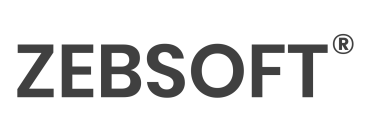
Simplify Environmental Evaluation and Management
Navigate today’s environmentally aware and complex regulatory landscape with ease. Managing your aspects and impacts is essential for sustainable and responsible business practices.
Navigate today’s environmentally aware and complex regulatory landscape with ease. Managing your aspects and impacts is essential for sustainable and responsible business practices.
ISO 14001 Environmental Management System Software
Control environmental compliance with an ISO 14001 Environmental Management Software system that will manage all your requirements and controls in one platform creating continual improvement of you environmental controls. Cloud Based EMS Software control for multiple sites & rapid deployment. A standalone or combined environmental management system, for ISO Management. Built on ISO structures.
Certification / Accreditation for ISO14001 Environmental Management: Fully templated system, Consultancy services, Implementation, Certification, Training
Environmental Aspects and Impacts Management
ZEBSOFT empowers organizations to effectively manage environmental risks and benefits by creating visibility and fostering understanding of critical environmental factors.
- Integrate with Business Processes: Align environmental management seamlessly with organizational processes, ensuring it becomes an integral part of daily operations.
- Promote Environmental Awareness: Communicate the importance of environmental responsibilities, maintaining ownership at all levels.
- Informed Decision-Making: Publish accurate information on aspects and impacts, empowering users to understand their roles in maintaining environmental controls.
- Foster a Responsible Culture: Cultivate a culture of environmental accountability by motivating participation and supporting environmental risk management efforts.
- Enhance Strategies and Controls: Continuously improve environmental strategies by effectively managing ongoing risks in processes and operations.
- Comprehensive Risk Integration: Expand capabilities by adding risk modules for Quality, Health & Safety, Information Security, and Contingency Planning.
ZEBSOFT’s environmental management software ensures a proactive and integrated approach, driving sustainability and regulatory compliance across your organization.
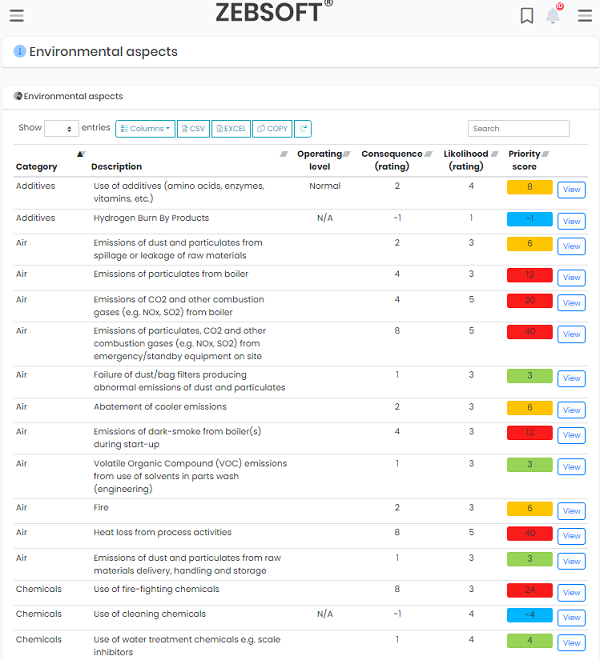
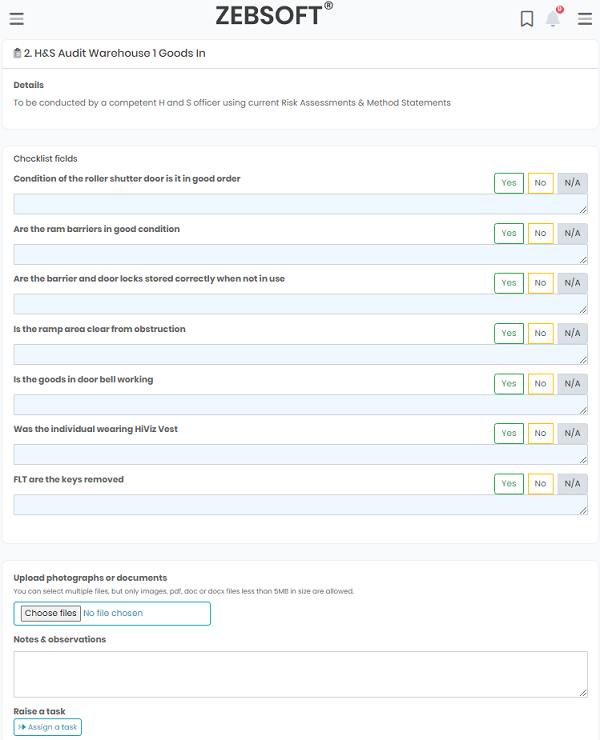
Efficient and Accurate Environmental Checks with ZEBSOFT
ZEBSOFT streamlines environmental monitoring with robust checklist audits, ensuring compliance and operational excellence.
- Quick Check & Pro Check Audits: Tailored checklist audits for day-to-day environmental control.
- Predefined Criteria: Audits are aligned to specific, predetermined standards for consistency and accuracy.
- Process Visibility: Gain real-time insight into processes and their interdependencies during the audit.
- Objective Scoring: Background scoring methods ensure unbiased results, free from auditor influence.
- Real-Time Documentation: Attach photos and supporting evidence directly to audit reports, enhancing credibility.
- Incident Escalation: Seamlessly escalate findings to Incident and Non-Conformity management for immediate action.
- Instant Reporting: Provide senior management with real-time alerts and comprehensive audit results.
ZEBSOFT empowers organizations to perform efficient, reliable environmental audits, fostering accountability and driving continuous improvement.
Streamlined Control Across Multiple Sites with ZEBSOFT
ZEBSOFT enables efficient management of operations across multiple locations, ensuring clear communication, accountability, and resource allocation.
- Resource Allocation: Assign system resources to specific sites with controlled access, ensuring clarity in ownership and processes.
- Centralised Documentation: Manage all documents centrally with authorised control, eliminating inconsistencies and reducing local-level errors.
- Cloud-Based Access: Operate securely on private AWS servers in London, providing reliable, secure, and scalable cloud access.
- Task Management: Assign specific processes and tasks with defined completion times, enhancing productivity and accountability.
- Integrated GRC Communication: Eliminate cross-platform errors by managing Governance, Risk, and Compliance communication within ZEBSOFT’s unified platform.
- Verified Communication: Maintain evidence of communication with document signing and audit trails for accountability.
- Real-Time Alerts: Stay informed with system-generated notifications and email alerts to ensure no task or compliance measure is overlooked.
Learn more about how ZEBSOFT can optimise your multi-site management and drive operational efficiency.
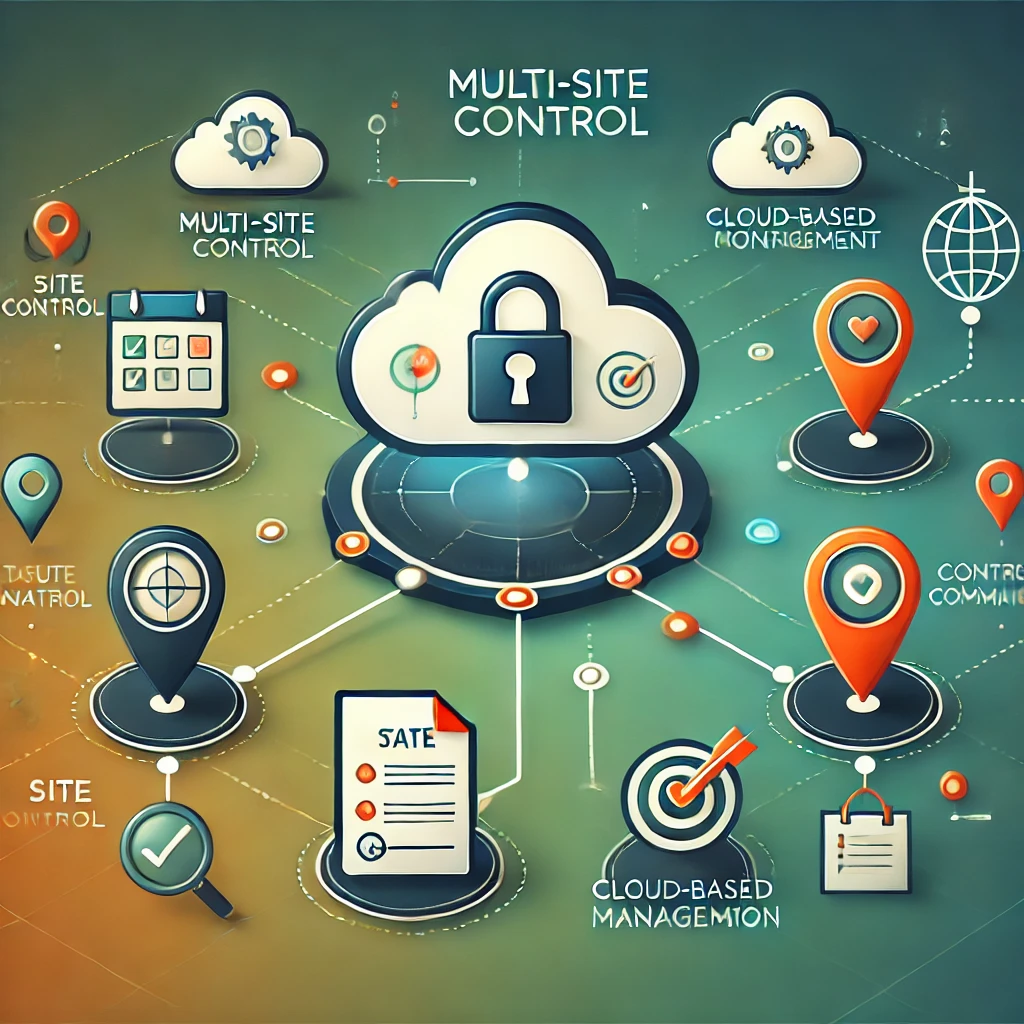
Effective Control of Documented Environmental Information with ZEBSOFT
ZEBSOFT ensures secure, efficient, and compliant management of your environmental documentation, eliminating risks of misuse and enhancing operational excellence.
- Classified Access & User Signing: Protect sensitive documents with access controls and verified user signatures, ensuring accountability and security.
- ISO-Compliant Management: Align with ISO 27001 and ISO 9001 standards through strict control over document creation, indexing, and publishing.
- Profitability Through Control: Streamline document processes to improve efficiency at both business and operational levels.
- Secure Cloud Storage: Store all documents on private, secure AWS servers located in London, ensuring data protection and accessibility.
- Full Digitisation: Transition to a fully digital system where only authorised versions of documents are accessible, reducing errors and enhancing compliance.
- Comprehensive Oversight: Manage every aspect of your documentation, including integrity, classification, distribution, and reproduction, with ease.
Discover how ZEBSOFT can revolutionise your document management processes.
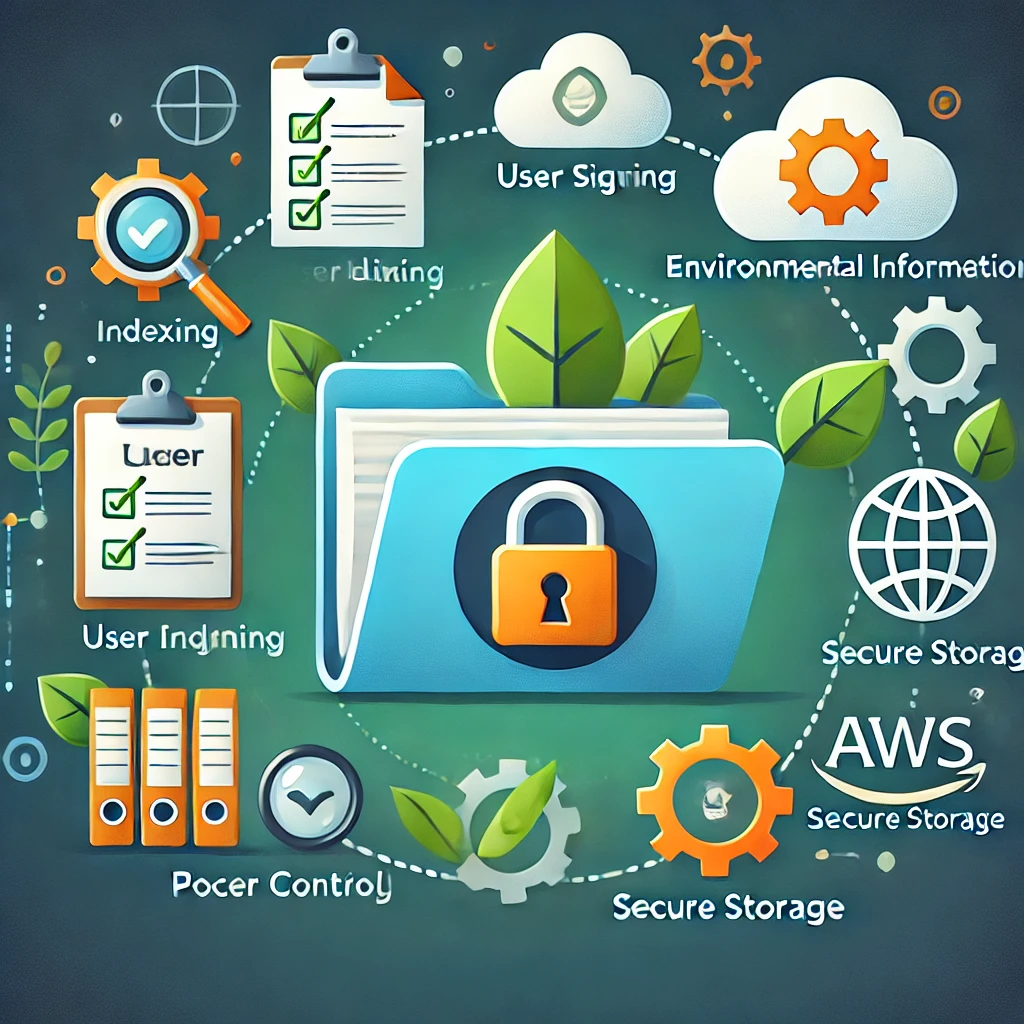

Streamline Environmental Control Mechanisms with ZEBSOFT
ZEBSOFT empowers organizations to define, manage, and enhance environmental roles and responsibilities, ensuring clarity and compliance.
- Define Roles and Responsibilities: Establish clear roles, responsibilities, and authorities to create structured and accountable teams aligned with ISO 9001 principles.
- Visibility Across Functions: Gain full oversight of critical functions, including planning, organizing, evaluating, staffing, and leading, ensuring no aspect is overlooked.
- Strong Communication Platform: Eliminate oversights with a robust communication system that ensures clear and consistent information flow.
- Continuous Improvement: Embed consistent and continual improvement practices into your processes, fostering long-term operational excellence.
- Management Tools for Real Change: Equip management with tools to drive meaningful improvements and maintain organizational control effectively.
- Evidential Data Trail: Keep a complete, verifiable record of actions to ensure accountability and compliance.
Discover how ZEBSOFT can enhance your environmental control mechanisms today.
Simplify Environmental Compliance with ZEBSOFT EMS Software
ZEBSOFT’s Environmental Management System (EMS) software streamlines environmental compliance and enhances sustainability efforts. Designed to align with ISO 14001 standards, it provides a centralized platform to manage environmental aspects and impacts effectively across multiple sites.
Key Benefits of ZEBSOFT EMS Software
Environmental Risk Management
Identify and mitigate environmental risks by aligning management processes with operational activities. Foster a proactive culture of responsibility throughout your organization.
Efficient Environmental Audits
Conduct daily assessments with Quick Check or perform in-depth audits with Pro Check. Real-time reporting and automated escalation ensure effortless compliance with regulatory requirements.
Seamless Multi-Site Management
Allocate resources efficiently and standardize processes across locations. With secure, cloud-based access hosted on AWS servers in London, ZEBSOFT facilitates seamless communication and control.
Centralized Document Management
Ensure strict control over environmental documentation using tools compliant with ISO 27001 and ISO 9001. Features like classified access, user signing, and centralized storage enhance security and organization.
Clear Roles and Responsibilities
Define and communicate roles, responsibilities, and authorities with clarity. Adopt ISO 9001-compliant structures to enable effective planning, organization, and leadership.
Advanced Environmental Controls
Maintain oversight and adherence to best practices with ZEBSOFT’s robust communication platform. Support continuous improvement as a core element of your environmental strategy.
Achieve Environmental Excellence with ZEBSOFT
ZEBSOFT EMS software empowers organizations to enhance environmental performance, improve efficiency, and reduce ecological impact, all while simplifying compliance.
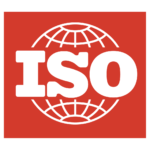
ISO14001 Environmental Management System (EMS)
